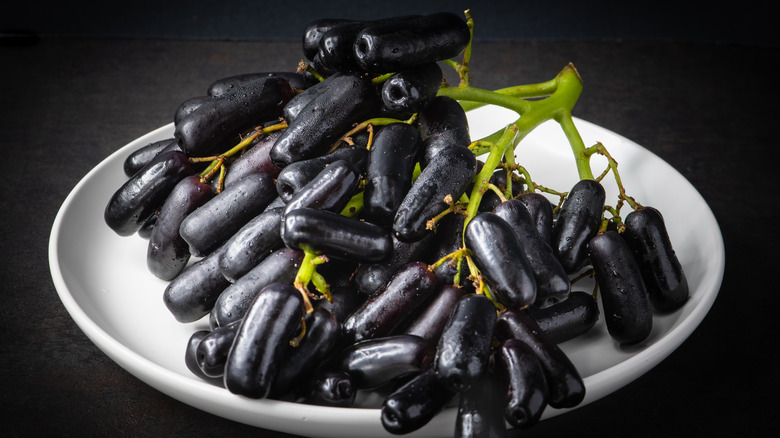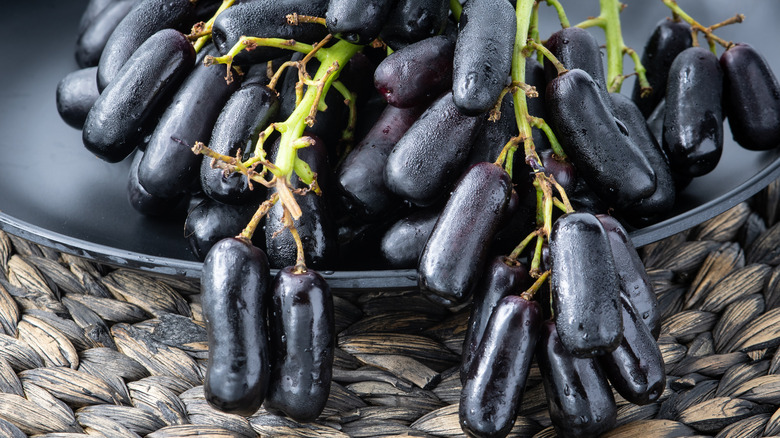Moon Drop Grapes: What Exactly Are They & How Do They Taste?
Have you ever heard of Moon Drop grapes? Here's everything you need to know about this fantastic fall fruit. It used to be that when it came to the grape selection at your neighborhood grocery store, the options were limited to the standard round red, black, or green berry. As of 2004, an eye-popping alternative joined the fold to alter our grape expectations. With its deep purple hue and an elongated shape that resembles stubby Grimace fingers, the Moon Drop, which arrives in August and sticks around through November, is hard to miss.
But this grape varietal is no mere novelty. It offers the complete (oversized) package: pronounced sweetness with the right balance of acidity to stomp all over the competition. But where exactly did the Moon Drop come from? Despite its otherworldly appearance, the Moon Drop is a product of California, more specifically from Shafter, a few miles northwest of Bakersfield. Moon drop grapes are exclusively grown by Grapery, which has completely changed the grape game by developing viral varieties, such as Cotton Candy and Gum Drops. And yes, both certainly live up to their sweet tooth billing.
"Our passion and our drive is to grow the most flavorful grapes in the world," said Grapery CEO Jim Beagle, who joined forces with company founder Jack Pandol in 2008. Beagle and Pandol recognized the limited variety of table grapes available for mass consumption and made it their mission to expand those options well beyond our traditional expectations for the fruit.
How moon drop grapes are cultivated
While the unorthodox berries produced by Grapery may seem like something out of Willy Wonka's factory or Dr. Frankenstein's lab, they're non-GMO. "The concept that we really advocate for within that company is to go around the world and find these wild grape species that have all kinds of interesting characteristics," said Jim Beagle. "We bring them here and start cross-pollinating everything... Grapes are vegetatively propagated. It's not a hybrid that comes out of seed like corn or other plants. Once a variety is created, you take cuttings off that variety, and you create new plants out of that."
This means that genetically, the Moon Drops you buy in the store today share the same DNA as the ones initially grown in 2001. The only difference is in how they are farmed. The path to developing a commercially viable berry is a long one, and in the case of the Moon Drop, it took over 15 years of coaxing out the grape's best qualities through various farming techniques.
Public input even extended to the naming of the Moon Drop via an online contest. Then, of course, there's the impact of social media, which Beagle acknowledged has played a large part in spreading the word about these bizarre-looking berries.

